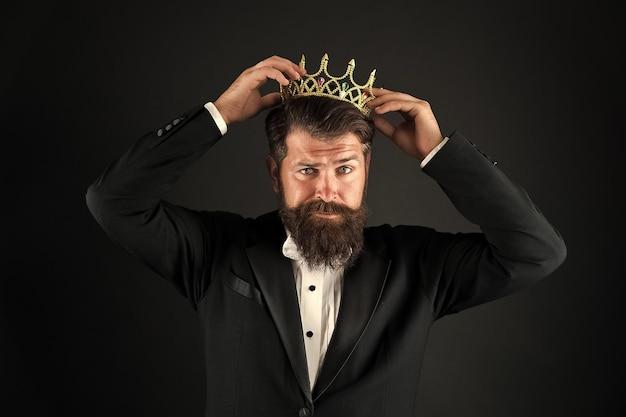The Renaissance, a period of cultural rebirth and enlightenment that took place in Europe between the 14th and 17th centuries, witnessed a profound transformation in the world of art. Artists during this time produced some of the most awe-inspiring and enduring works of all time. But have you ever wondered about the driving force behind such masterpieces? Look no further than patronage. In this blog post, we’ll delve into the importance of patronage in the Renaissance and uncover the key figures who played a significant role in the success of modern art.
During the Renaissance, artists relied heavily on the support and sponsorship of influential individuals known as patrons. These patrons, with their substantial financial resources and social status, provided artists with the means to thrive and create their extraordinary works. From wealthy merchants to powerful aristocrats, patrons played a vital role in nurturing artistic talent and facilitating the production of groundbreaking artworks. But why was patronage so crucial in this era? Let’s explore the reasons behind its significance and the ways in which it shaped the artistic landscape of the Renaissance.

Why Patronage Was Vital during the Renaissance
Exploring the Significance of Patronage during the Renaissance Period
During the Renaissance, patronage played a pivotal role in the flourishing of art, culture, and intellectual exploration. It served as a catalyst, propelling artists, writers, and thinkers to create magnificent works that have stood the test of time. Without the support of patrons, the Renaissance as we know it would have been a mere shadow of its glorious self.
The Renaissance without Patrons: A Colorless Canvas
Before delving into the importance of patronage, let’s imagine a Renaissance with no patrons. Picture this: Michelangelo’s “David” lying unfinished in a dusty workshop, Leonardo da Vinci’s “Mona Lisa” merely a fleeting idea, and the magnificent Sistine Chapel void of its breathtaking ceiling. The Renaissance would have been deprived of its most iconic masterpieces if not for the crucial backing of patrons.
Fueling the Renaissance Economy, One Commission at a Time
Patrons played a vital role in stimulating the Renaissance economy. By commissioning artworks, the wealthy elite invigorated trade and commerce. Art was not only an expression of beauty but also a status symbol, an emblem of power and wealth. Patrons understood this, utilizing their support to enhance their prestige and leave a lasting legacy.
A Renaissance Talent Show: Patrons and Artists Unite
Patrons recognized the potential of talented artists and provided them with a platform to showcase their extraordinary skills. With financial support, artists were able to dedicate themselves wholeheartedly to their craft, pushing boundaries and evolving their techniques. The symbiotic relationship between patrons and artists fostered innovation, transforming the art world forever.
Patrons: The Medici of Inspiration
The Medici family of Florence emerges as the embodiment of Renaissance patrons. They recognized the significance of art and intellect, nurturing and promoting some of the greatest minds of their time. Under the Medici’s guidance, luminaries such as Michelangelo, Brunelleschi, and Botticelli thrived, forming the bedrock of the Renaissance. The influence of patrons like the Medici cannot be overstated.
Preserving the Renaissance Legacy: Patronage as Cultural Heritage
One of the enduring legacies of Renaissance patronage is the preservation of art and culture. Without the support of patrons, many invaluable masterpieces would have been lost to time or destroyed. Thanks to their patronage, art galleries, museums, and libraries have become the guardians of our collective history, allowing future generations to appreciate and learn from the Renaissance.
A Salute to the Renaissance Patrons: Unsung Heroes of Art
As we reflect on the importance of patronage in the Renaissance, let us not forget the unsung heroes who made it all possible. These patrons, with their vision and generosity, shaped an era that continues to inspire and captivate us today. We owe a debt of gratitude to these trailblazers who recognized the potential of the human spirit and fueled the flames of creativity.
In conclusion, patronage was not just important in the Renaissance—it was crucial. It fueled artistic innovation, stimulated the economy, preserved cultural heritage, and provided a platform for the greatest minds of the time. The impact of patronage lingers even in the present day, as we stand in awe of the magnificent works of art that have withstood the test of time.
So let us raise our glasses to the Renaissance patrons, for their unwavering support and belief in the power of the human imagination. Without them, the Renaissance would have been a mere blip in history, rather than the cultural revolution that continues to inspire and amaze us centuries later.

FAQ: Why Was Patronage Important in the Renaissance
In the vibrant world of the Renaissance, patrons played a pivotal role in fostering artistic and cultural achievements. The era witnessed the emergence of brilliant thinkers, skilled artisans, and groundbreaking artists who flourished under the support of these well-to-do individuals and institutions. Let’s delve into the frequently asked questions about the significance of patronage in the Renaissance.
Who Were the Influential Patrons that Spearheaded the Success of Modern Art
Hailing from various backgrounds, notable patrons such as the Medici family, Pope Julius II, and Isabella d’Este significantly contributed to the flourishing of modern art during the Renaissance. Their patronage provided the necessary financial support and resources for artists to create their masterpieces. Whether in Florence, Rome, or other art hubs, these influential figures acted as catalysts for innovation and creativity.
What Does Patronage Mean in Politics
Patronage in politics refers to the practice of providing support, favors, or positions of power to individuals or groups who have demonstrated allegiance or loyalty. In the context of the Renaissance, patronage extended beyond the political realm and encompassed the art world, with patrons often holding significant political influence.
What Was the Focus of Renaissance Art
The Renaissance was marked by a renewed emphasis on humanism and a fascination with classical antiquity. Artisans and artists of the time sought to capture the beauty of the human form, explore mathematical perspectives, and portray religious themes with a heightened level of realism. Renaissance art celebrated the human intellect, emotions, and the interconnectedness of various disciplines, ranging from painting and sculpture to architecture and literature.
Who Is the Patron-in-Chief
The term “Patron-in-Chief” does not have a direct historical association with the Renaissance or with art in general. It may be used colloquially to refer to the most influential or prominent patron within a specific context or domain.
What Does Bestowing Mean
To bestow means to grant or confer something, often with a sense of honor or privilege. In the Renaissance era, patrons bestowing their support upon artists meant providing them with financial backing, commissions, and access to resources needed for artistic creation.
Are Patrons Considered Customers
While there are similarities between patrons and customers, they are not entirely synonymous. Customers typically engage in transactional relationships, exchanging money for goods or services. On the other hand, patrons form a more personal and sustained bond with artists, offering ongoing support and nurturing their creative endeavors.
What Does “Patrons Only” Mean
“Patrons Only” refers to an exclusive group or event reserved solely for supporters or contributors. In the Renaissance, certain artistic works, exhibitions, or performances were exclusively available to patrons who had financially backed the ventures.
What Is the Full Meaning of Patronage
Patronage encompasses a complex system of support, both financial and non-financial, provided by influential individuals or institutions to artists, musicians, writers, and thinkers. It involves nurturing talent, enabling artistic expression, and promoting cultural development through sponsorship, commissions, and networking opportunities.
How Do You Use the Word Patronage
The word “patronage” can be utilized in various contexts. For instance, one could say, “The Medici family’s patronage of Michelangelo greatly contributed to the creation of iconic sculptures like the David.” It can also be employed to describe broader concepts of support and advocacy, such as, “The wealthy merchant’s patronage of the arts helped transform the cultural landscape of the city.”
What Role Did Money and Patronage Play in the Renaissance
In the Renaissance, money and patronage were tightly interwoven. Patrons provided financial resources to artists, enabling them to dedicate their time and skills to their craft. This financial support facilitated the creation of breathtaking artworks, magnificent structures, and groundbreaking literary works that have left an indelible mark on history.
Why Was Patronage Crucial in the Renaissance
Patronage was vital in the Renaissance because it empowered artists to focus on their creative pursuits without being solely dependent on the whims of the market. The financial stability offered by patrons allowed artists to experiment, innovate, and develop their skills, leading to unprecedented advancements in artistic expression and cultural achievements.
Who Were Known as Patrons in the Renaissance
During the Renaissance, patrons were usually wealthy individuals, noble families, or influential institutions. They not only supported artists financially but also provided them with facilities, materials, and opportunities to collaborate, which fostered artistic growth and created a symbiotic relationship between the patron and the artist.
What Is the Power of Patronage
The power of patronage lies in its ability to shape and influence the trajectory of artistic, intellectual, and cultural movements. Patrons possessed the resources and connections to elevate talented individuals, propel artistic innovation, and even shape the taste and aesthetics of their time. Through their support, they were catalysts in transforming society and leaving lasting legacies.
How Did Patronage Change During the Renaissance and Why
Patronage underwent a significant transformation during the Renaissance. In the medieval era, patronage was often associated with religious institutions, with artworks serving primarily as vehicles for spiritual devotion. However, during the Renaissance, the focus shifted to a more secular and humanistic approach, with patrons supporting artists who portrayed the full range of human experiences, from biblical narratives to mythological tales and everyday life.
What Is the Relationship Between Artists and Patrons
The relationship between artists and patrons during the Renaissance was multifaceted and intricate. Artists relied on patrons for financial support, while patrons, in turn, sought the admiration, prestige, and cultural enrichment that came with sponsoring talented individuals. This dynamic partnership between creators and benefactors created a vibrant ecosystem that propelled artistic achievements.
What Is the Meaning of Thralldom
Thralldom refers to a state of being in servitude or bondage. In the context of the Renaissance, artists who lacked patronage often found themselves restricted by financial constraints, limiting their creative freedom and forcing them to pursue less fulfilling artistic endeavors.
What Is a Patronage Reward
A patronage reward refers to a form of acknowledgment or reciprocity offered by an artist to their patron. This could take various forms, such as dedicating a work of art to the patron, incorporating their likeness into a painting, or arranging a private exhibition exclusively for the patron and their guests.
Who Were Patrons in India
In Indian history, there were several prominent patrons who supported the arts and culture. From ancient kings and emperors like Ashoka and Akbar to the affluent merchants of the medieval era, patrons in India played a pivotal role in the development of architecture, literature, music, and dance.
What Is the Opposite of Patronage
The opposite of patronage, in the context of supporting the arts or creativity, could be seen as neglect or disinterest. Artists without patrons often faced significant challenges in finding financial support and recognition, hindering their ability to fully explore their artistic potential.
What Is the Meaning of Trepidation
Trepidation refers to a feeling of fear or unease. While not directly related to the concept of patronage, the word can be used metaphorically to describe the anxiety and uncertainty artists might experience when seeking financial backing or awaiting the judgment of their patrons.
Now that you have a deeper understanding of why patronage was of utmost importance during the Renaissance, you can truly appreciate the impact it had on the extraordinary artistic achievements of the era. From the towering sculptures of Michelangelo to the captivating paintings of Leonardo da Vinci, the legacy of patronage remains etched in the annals of art history.
